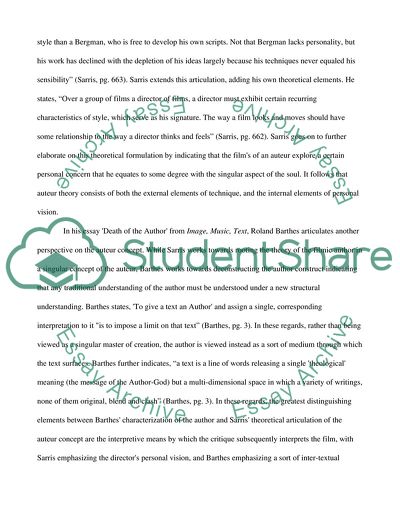Cite this document
(Ingmar Bergman and Auteur Theory Coursework Example | Topics and Well Written Essays - 2000 words, n.d.)
Ingmar Bergman and Auteur Theory Coursework Example | Topics and Well Written Essays - 2000 words. Retrieved from https://studentshare.org/visual-arts-film-studies/1745716-film-theory
Ingmar Bergman and Auteur Theory Coursework Example | Topics and Well Written Essays - 2000 words. Retrieved from https://studentshare.org/visual-arts-film-studies/1745716-film-theory
(Ingmar Bergman and Auteur Theory Coursework Example | Topics and Well Written Essays - 2000 Words)
Ingmar Bergman and Auteur Theory Coursework Example | Topics and Well Written Essays - 2000 Words. https://studentshare.org/visual-arts-film-studies/1745716-film-theory.
Ingmar Bergman and Auteur Theory Coursework Example | Topics and Well Written Essays - 2000 Words. https://studentshare.org/visual-arts-film-studies/1745716-film-theory.
“Ingmar Bergman and Auteur Theory Coursework Example | Topics and Well Written Essays - 2000 Words”. https://studentshare.org/visual-arts-film-studies/1745716-film-theory.


